













THE Victoian state government's $120 million election promise to transition from native forestry to softwood plantations in Gippsland has been debunked by the workers at the coalface - the forest contractors - as the state prepares to go to the polls in late November.

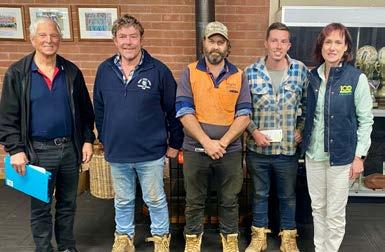
And the Victorian For est Products Association, while welcoming the prom ise said the investment was originally promised as the transition for the Gippsland hardwood industry
"The plan does not add up," Carlie Porteous, the general manager of the Aus tralian Forest Contractors Association, said.



Under the government's policy, Victorian taxpay ers will fund a $120 million program that aims to plant 14,000 hectares of softwood plantations. Hancock Victo rian Plantations is to co-in vest to buy, lease and man age the plantations as part of the transition the native forest industry into planta tions by 2030. Planting is meant to start next year, subject to approvals, and will continue for 10 years.
The Minister for Agricul ture, Gayle Tierney, said the agreement with Hancock Victorian Plantations in volved planting an extra 16 million trees to create a new forest estate.
HVP, one of the largest pri vate plantation companies in Australia, will match the Labor Government’s invest ment almost dollar-for-dol lar to buy, lease and manage the more than 14,000 ha of softwood plantations.
Yet Ms Porteous said the Victorian government promised to spend $110 mil lion for 50,000 ha of produc tive plantation estate.
"That means the Labor Government is spending $10 million more to deliver 36,000ha less than its origi nal promise," she said. "How does that make sense?"
Ms Porteous queried where the 14,000ha of plan tations were going to come from. "Farmland is Gipp
●
●
●
●
●
●
●
sland is currently selling for record high values of $33,000 per hectare, mean ing it would cost half a bil lion dollars to purchase this land, provided you could find farmers willing to sell up," she said.
Clarification was also needed about the govern ment's claim that the policy would support 2000 new and existing jobs. "Plant ing of this estate will take a number of years so any em ployment benefits won’t be realised until at least 2035 when a small portion of the plantation estate will be
available for thinnings har vest, haulage and process ing," she said.
"In the meantime, forest contractors, their crews, sawmills and their workers as well as forest communi ties will be devastated."
Traralgon forestry con sultant John Cameron said finding high quality land
for new plantations was problematic. The planta tions had to be established on good sites that produced quality timber with mini mum degrade.
"This means relatively deep soils with moderate to high rainfall to produce quality timber with mini mum degrade. Marginal
sites have proved unaccep table even with special silvi culture. Special silviculture includes planting at rela tively high initial stocking and early non-commercial ly thinning and pruning," he said.
Despite Gippsland's 1.23
James O’Loughlin Esteemed Author & BroadcasterREGISTER NOW & JOIN THE CONVERSATION Philip Hopkins
Front
Publisher and Chief Executive: Hartley Higgins
General Manager: Robyn Haworth
Editor: Bruce Mitchell b.mitchell@ryanmediapl.com.au
Adelaide Office: (08) 8369 9512
Advertising: Gavin de Almeida g.dealmeida@ryanmediapl.com.au Adelaide Office: (08) 8369 9517
Creative Services: Tim Coleman
Publication Design: Tim Coleman Trader classifieds: g.dealmeida@ryanmediapl.com.au Adelaide Office: (08) 8369 9517
Subscriptions: subs@forestsandtimber.com.au Adelaide Office: (08) 8369 9522
Subcription rates
One-year (8 editions) $55
Two-years (16 editions) $95
Accounts: Adelaide Office: (08) 8369 9555
Postal Address: 630 Regency Road, Broadview South Australia 5083
Phone: (08) 8369 9555 Fax: (08) 8369 9501
Melbourne Office: Suite 2262, 442 Auburn Rd, Hawthorn VIC 3122
Phone: (03) 9810 3262
Find us on Facebook @australianforestsandtimbernews Website www.timberbiz.com.au
Printed by Lane Print, Adelaide, SA
The opinions expressed in Australian Forests & Timber News are not necessarily the opinions of or endorsed by the editor or publisher unless otherwise stated. All articles submitted for publication become the property of the publisher.
All material in Australian Forests & Timber News copyright 2022 © Ryan Media. All rights reserved. No part may be reproduced or copied in any form or by any means (graphic, electronic, or mechanical including information and retrieval systems) without written permission of the publisher.
While every effort has been made to ensure the accuracy of information, the published will not accept responsibility for errors or omissions, or for any consequences arising from reliance on information published.
THE Victorian Native Forest Industry has been treated with ab solute contempt by the An drews Government.
The Minister for Environ ment and Climate Change should be ashamed of her self for, in the first instance providing an open door policy for Green Activists and secondly allowing her department to block Vicfor ests at every turn.
The most frustrating as pect of Lily D’Ambrosio’s performance has been her refusal to make the re quired changes to the Code of Practice that would have stopped third part litigation that currently has 80% of the Coupes on the Timber Release Plan shut down by Court Injunction.
The Minister has actively worked against her own Government’s Policy that committed to transition the Industry to Plantation by 2030 and to continue harvesting at 2019 volumes with a gradual reduction from 2024-25.
Given the Premiers pro pensity to sack Minister’s, especially women, I can’t work out how Lily has sur vived. One would have to think that the Premier has been complicit and sup portive of her inaction.

ply and this is pushing up prices and impacting on first home buyers in par ticular.
The way the Industry has been treated is an absolute disgrace. Sawmills now out of supply and standing down workers, Opal Paper with no hardwood pulp, Harvest and Haul Contrac tors with equipment parked up and their employees leaving the industry and Vicforest Staff dealing with the stress of a very uncer tain future.
The construction industry is desperately short of sup
Nothing will happen be fore the Election as Labor desperately shores up their preference deals with the Greens in nearly 30 seats around Melbourne.
For the sake of the Indus try and Victoria we must elect a Guy/Walsh Govern ment on November 26th.
Matthew Guy has prom ised to return the Indus try to pre 2019 harvesting levels, stop third party liti gation and continue to al low sustainable harvesting that protects all values of the Forest, whilst supply ing high quality and much sought after hardwood
products and supporting the economies of Country communities.
As I leave my Parliamen tary career it is with a great sadness that the Industry that I love is in such a ter rible situation. I will always regret not being able to do more for you.
I encourage everyone in volved in the Industry, sup porters and across the sup ply chain to stick together, support each other and don’t give up.
In signing off, you will al ways have my support and I salute you all.
Gary Blackwood is retiring as the Member for Narracan at the November State elec tions after 16 years in State Parliament.
THEEast Gippsland town of Orbost has be come the very human face of the plight of the na tive timber industry in Vic toria.
The industry closure scheduled for 2030 has the potential to gut the town.
With a population just shy of 2500, it simply cannot cope with the potential loss of a third of its workforce.
It has been estimated that there are 115 full-time jobs directly dependent on the timber industry in Orbost, and an estimated a further 60 “peripheral” jobs would be affected by the closure.
There are probably more than that.
A recent meeting in the town was told it stood to lose more than other timber
towns and that the job loss es could occur sooner than in other towns.
That because many of Gippsland’s other timber towns are closer to employ ment opportunities in dif ferent industries.
Even for those towns that’s not much comfort.
The ABC reported that Howitt Society secretary Garry Squires conceded it was “difficult to see how 40odd days out from an elec tion that we’re going to have a major impact on govern ment policy”.
“The community’s starting to realise that the govern
ment’s announcement of two years ago is real. What triggered that is the closing of [another] mill … a cou ple of weeks ago when they completely ran out of logs,” he said.
The State Government in Victoria is deliberately kill ing an industry and towns in East Gippsland to, it would seem, appease some conservation groups which it is understood helped La bor win the last State elec tion.
True or not, the results are now not in doubt.
Even promises by the Gov ernment of $120 million to help “shore up Victoria’s timber supply and support ing the forestry sector’s transition away from na tive timber” appear to be
a repeat of a much earlier promise which was never kept.
Australian Forest Contrac tors Association general manager Carlie Porteous says that plan simply does not add up.
It doesn’t.
Victoria votes on Novem ber 26. Unfortunately the election looks like it will be won in Melbourne and the larger regional cities, not in towns like Orbost.
But that doesn’t mean they should give up the fight, as hard as that fight right now seems to be.
Should anyone still be un decided about they way they might vote on November 26, the plight of the people of Orbost might just sway that decision,
THEcutbacks to tim ber supply from 2024, which will halve the amount of wood harvested to just two per cent of the native forest estate, will be guided by compliance standards set out in legisla tion this year.

These standards, accord ing to the Andrews govern ment, show how the timber industry can meet its obli gations.
This will establish a legal presumption that harvest ing operations will have met the requirements of the ‘precautionary princi ple’.
“These changes do not change the scope of the Pre cautionary Principle, nor its environmental protec tions as it remains a manda tory action under the Code (of Timber Practice), but compliance standards will remove much of the ambi guity about how it is imple mented,” says notes intro ducing the ‘Sawmill opt-out Scheme’.
The amendments to the Conservation, Forests and Lands Amendment Bill that were passed this year give the Minister for the En vironment or the DELWP Secretary the flexibility to amend the code, if neces sary, to ensure its princi ples are adhered to.
A key issue is how the in ternationally recognised ‘precautionary principle’ re lates to timber harvesting. Under the precautionary principle, threats of serious or irreversible environmen tal damage when the science is not yet settled, “requires us to put in place protective measures to ensure we don’t have regrets in the future”, the Environment Minister, Lily D’Ambrosio, told Parlia ment.
“The precautionary prin ciple was triggered by the 2019/20 Victorian bushfires, which dramatically im pacted forest ecosystems, threatened the survival of endangered species and limited timber production, particularly in Gippsland and East Gippsland,” she said.
“There remains scientific uncertainty about the abili ty of species to recover from these impacts… considera tion needs to be given to ad ditional protective actions ... in timber harvesting op erations.”
Ms D’Ambrosio said the precautionary principle meant the framework for protecting forests could respond to shocks such as major fires and also provide greater certainty to ensure the timber industry was meeting its obligations –hence the extra discretion ary powers to be given to the Minister or Secretary.
However, former Op position spokesman on forestry, Gary Blackwood, attacked Ms D’Ambrosio’s claim as “disingenuous” as it neglected to mention that the code applied only to a very minor portion of the state’s 7.8 million hectares of public forest.
Just 4.5 per cent of na tive forest was available for timber production and other uses. “Therefore, timber production opera tions that are subject to the Code are of such a propor tionally minor scale, that there is virtually no chance of them creating a threat of ‘serious or irreversible en vironmental damage’ that justifies invoking the pre cautionary principle,” said Mr Blackwood, who is not standing at the November 26 state election.
“Similarly, the excuse that the 2019–20 bushfires have created ‘scientific uncer tainty about the ability of species to recover’ is largely
disingenuous. Forests have been recovering from simi lar major fire events since European settlement—in deed the Ash regrowth for est which comprises the state’s primary timber re source is the product of the huge 1939 bushfires.
“The distinguishing fea ture of the 2019–20 bush fires was their extent and, notwithstanding that parts of East Gippsland were in tensively burnt, it has been noted by fire experts that the worst days experienced in that fire season were not as bad as in other most no table fire seasons.”
Mr Blackwood said the original Code was written as a set of state-wide broad minimum standards of en vironmental protection during timber production.
“By necessity it retained a lot of flexibility in word ing to account for the real ity that, for example, par ticular requirements for wet forests in the Central
Highlands may be far more onerous than what is neces sary to protect environmen tal values in flat red gum forests and woodlands in northern Victoria,” he said.
“The detailed prescrip tions needed to implement these standards were con tained in associated re gional documents that were more attuned to particular local forests… designed to take into account the char acteristics of each of those regions.”
The Code’s provisions had been carefully determined based on a mix of science, decades of overseas and Australian field observa tions, and the operational practicalities for workable timber production. “Timber is harvested on an 80-year rotation. Not one species of animal has become extinct because of timber harvest ing. Timber harvesting and threatened species have coexisted for well over 100 years,” he said.
Continued from Page 3
million hectares of cleared farmland, Mr Cameron also pointed to the high cost of that land. "Most of Gipps land's dairy country is over priced (overcapitalised) for plantations, and most of the sheep and cropping country is too dry," he said. "Most Gippsland farmland is now mostly over-priced for plan tation development."
Regulatory impediments included planning restric tions, native vegetation clearing guidelines that pre vent the removal of a few
trees scattered trees and road construction restric tions.
Under the state govern ment's forestry plan, har vesting of Gippsland's native forest will be halved in 2024 and fully closed in 2030.
A consultant's report for the federally funded Gipp sland Forestry Hub found that more than one million hectares of land was suit able for plantations in Gipp sland.
However, it warned that few plantations had been
established on farms in the past. Despite positive cash flows, prefer not to have pine trees in their pad docks.
Also, farmers are put off by complex regulations to plant and manage planta tions, with little informa tion available.
The report said the An drews government's policy to end native harvesting, de spite a growing demand for timber, would reduce local processing capacity.
“Victoria imports on aver
age 36 per cent of its soft wood demand and desper ately needs to secure future timber and fibre supplies. This support to establish 16 million new trees is wel comed to close the current shortfall in sovereign tim ber supplies,” VFPA CEO Deb Kerr said.
However, Ms Kerr said the investment was originally promised as the transition for the Gippsland hardwood industry.
“With plantings only ex pected to commence in
2023, it will still leave a fu ture gap in harvestable tim ber and fibre from 2024,” she said.
Ms Kerr said HVP’s par ticipation would enhance Gippsland’s standing as a plantation region of major importance while provid ing immediate jobs in new plantings, tree and land cul tivation, and management.
“It also opens opportuni ties in the farm forestry space, for local landholders to participate,” she said.
MORWELL
Incumbent: Russell Northe (retiring)
Key towns: Traralgon, Morwell, Toongabbie, Churchill
Northe isn’t running this time with Gippsland doctor Kate Maxfield the Labor candidate and Traralgon plumber Martin Cameron endorsed as the Nats pick.

RIPON
Incumbent: Louise Staley (Liberal)

Key towns: Maryborough, Ararat, Beaufort, Stawell
Carlie PorteousAt the moment the future of the industry, these towns, and supporting industries and services is uncertain.
the Nations inability to pro duce critical items in order to keep the economy open. This has been exacerbated by the Russia/Ukraine war and timber import bans.
that the plan still needed an overhaul.
This remains the case.
Melbourne with the flow on being consumers will not be able to buy Victorian or Australian made timber or products.
BASS Incumbent: Jordan Crugnale (Labor)
Key towns: Wonthaggi, Cowes, Kilcunda, Lang Lang
MILDURA Incumbent: Ali Cupper (independent)






Key towns: Hopetoun, Mildura, Ouyen, Robinvale
We know that a reduction of approximately 45% Sales volume will be experienced in 2024 as a step down to the VFP 2030 policy deci sion. The Native Hardwood industry is a significant con tributor to the local econo my and a significant con tributor to local volunteer efforts such as firefighting in most regional areas and Timber Towns. The flow on effects will be devastating for many of these regions as some have already reported significant reductions in key services such as healthcare and education. This is all, at the same time, as organisa tions such as the Regional Australia Institute reports a growth in economic output for more progressive states encouraging regionaliza tion and growth outside of key metropolitan areas.
AFCA encourages the next state government to be more aligned with the Fed eral Labor Government’s own National Reconstruc tion Fund, which includes turbo-charging sovereign capacity for our wood and wood products industries.
I see forestry as the key for the future and believe it has a significant contribution in meeting the Federal Labor Government’s 43% reduc tion in emissions goal. The science tells us that active and adaptive forest manage ment, like that practiced by VicForests, not only miti gates the catastrophic ef fects of bushfires, but also absorbs more carbon than those ‘locked up’ for con servation purposes. Con servation and forestry com plement each other, and always have.
The future is still up for grabs. We know what the future looks like under the Victorian Forestry Plan. The plan is not an industry tran sition plan, it is an industry shutdown plan.
There is a potential oppor tunity for a bright future for a native timber industry in Victoria based on a sustain able yield brought about through sustainable forest management of allocated areas and log volumes sus tainably used from manage ment activity and harvest ing ensuring the health of the forest and catastrophic bushfire mitigation.
Realising this opportu nity will rely on political will and thinking which has been sadly lacking in recent decades.
We live in timber houses, surround ourselves with timber furniture and de mand timber packaging as the environmentally friend ly solution to waste.
Timber Towns Victoria questions - why would a government that is all about ‘Growing Jobs’ close down an industry that is sustaina ble provides climate chang es solutions and over 8,500 jobs across Victoria?

We may not see the im pact of job loses for at least another 12mths as some companies still have timber supplies. But with no lo cal timber being harvested in Victoria the ripple effect will been seen right down the chain and into furni ture manufacturing in Mel bourne. We already know that VISY has no pallets to deliver products to retail ers for distribution across the supply network such as everyday items to super markets. So job losses are being felt in Melbourne but right at this moment the impact is squarely on rural timber communities such as Orbost – with 37% of jobs expected to go.
SOUTH BARWON
Incumbent: Darren Cheeseman (Labor)
Key towns: Torquay, Moriac, Belmont, Grovedale
The policy framework was developed on the back of significant supply chain dis ruption through Covid and
Last year the union cam paigned for and won a big increase in support for tim ber workers who would be made redundant under the plan when wood allocations officially commence dimin ishing (Including redundan cy “top up” to four weeks leave per year of work in the industry, to a maximum of $120,000) whilst warning
Our sustainable Forest Management Certification and our Forest Code of Prac tice provide assurances that our forests are conserved and managed responsibil ity to ensure they deliver social, environmental, cul tural and economic benefits now and into the future.
The ripple effect is very real as harvesting grinds to a halt, jobs will be lost across rural communities and will than effect every timber related industry in
An independent report by Crowle Horwath for Ru ral Councils Victoria deter mined that for every job loss in Melbourne it was equal to 5 jobs losses in a rural com munity. It is a simple equa tion that the government is fully aware of together with the mental health impact on individuals and fami lies where families have no choice but must move away, children leave school & sport – towns die.
Forest Contracting businesses, by their very nature, are nimble and innovative. These business people and caretakers of the forest have learnt to adapt to different ways of doing things, evolving technology and changing landscapes over mul tiple generations. There will be new challenges, however. Uncertainty of contract tenure and historic government policy decisions has dealt a raft of complex challenges; attraction of skilled labour, or just any labour, reduction of training institutions and courses, and an un willingness from financial institu tions to underwrite necessary asset purchases.
The Coalition Government has re iterated its commitment to reverse the decision made by the current Labor government. With this level
of commitment to our industry, For est Contracting Businesses will be ready and able to get back to pro viding Australian markets with this much loved product.
Having a secure, long-term native forest and land management vision, with a positive social, economic and environmental outcome is wel comed by all forest contracting busi nesses and timber communities.
Michael O’ConnorAn incoming Government would need to do more than reverse the closure decision which involves a step-down supply from 2024 and cessation of supply in 2030. It would need to present a plan based on a de liverable sustainable yield.
The last time that industry/ com munity was provided a Resource Outlook from VicForests was in
2017. The Outlook forecast mixed species supply between 100,000m3 and 115,000 m3 each year until 2022 and Ash sawlog supply of 153,000m3 per year and then 130,000m3 per year from 2020/21.
These volumes have not been sup plied despite the Victorian Forestry Plan stating that contracted supply should be maintained until 2024.
A major impact of this has been litigation by Environment Groups seeking a swift shutdown of the na tive forest industry along with har vesting being stymied by the Lead beater possum prescription and the impact of fires.
The industry will only be able to recover if it is provided a level of certainty about supply which has been absent since the previous Gov ernment refused to commit to long term contracts ahead of the 2014 election.
There is no doubt that the survival of 8,500 timber related jobs across Victoria, many located in Mel bourne desperately need a rethink of the current legislation by the in coming government.
With only 2% of suitably available land left for harvesting the contract ing base is already diminishing which is exposing many rural com munities to a very uncertain fire season. The local timber companies and their workers are qualified ma chinery operators, and each year are called upon to join forces and pro tect their township but with many of these individuals no longer living within their communities, the towns are exposed to further stress and uncertainly moving forward with no solution from the government.
In practical terms if the new gov ernment reversed the decision, we could only hope that operators would happily gear up and swing into action.
The incoming government will also need to reconsider how it fulfils the governments guarantee supplies to Australian Paper with timber product to protect thousands of jobs.
Carlie PorteousThere is a well reported and sig nificant shortage of structural tim ber within the Australian market, which is causing delays in affordable housing. This shortage will soon be exacerbated, as the nation looks to open up and welcome back migra tion pathways to fill critical skills shortages. These skilled migrants and labour entrants will need hous ing, soon. Wood is the perfect build ing material as it stores carbon for its lifetime and is 100% renewable. As reported recently by VFPA, Vic toria is tipped to grow in population in Metropolitan Melbourne by 87% to 2056. All this growth will require a well consulted strategy for locally grown structural timber. At the same time we are also seeing signifi cant demand for visual grade timber such as Ash from Victoria, and a pro gressive move to fibre based packag ing and single use objects to replace plastics.
However, despite all this demand, souring land price is still a barrier to investment for many Timber In vestment Management Organisa tions (TIMO). As such, the state gov ernment, like in previous decades where we saw any level of growth,
will need to aid investment into the establishment of new plantations. This can be done by reviewing gov ernment owned, existing crown and utilities land use for potential estab lishment and farm forestry encour agement models.
AFCA would also like to ensure the process encourages a diverse range of management organisations and investors to ensure the state has sufficient competition and choice, whether as a contractor or a custom er of wood products.
The Gippsland Plantations Invest ment Program has been a major disappointment. To invest $120 mil lion and leverage the private sector to plant just 14,000 hectares over 10 years (increasing Victoria’s planta tion estate by just 3.3% {and soft wood estate by just 6.2%}) demon strates the severity of the challenge at hand.
The priority for the State Govern ment, working with the Federal Gov ernment should be schemes which incentivise the replanting of short rotation hardwood planted under the MIS to long rotation plantations rather than allow that land to be re
verted to less social, economic, and environmentally beneficial use.
Given the price of land being a pro hibitive barrier to new plantation establishment, incentivising the uti lisation of crown land and farms for plantation establishment needs to also be a priority.
Certainly, the Australian Govern ment ensuring that there is forestry friendly offset eligibility for emitters - compensating for emitting above their safeguard allocation - will be a key piece of the puzzle of provid ing the sector with opportunities to fully participate in the lower carbon economy.
We need to ensure the incoming government immediately rethinks mixed species timber harvesting volumes and bust open the myths around native timber that led the current Government to the ill-ad vised policy of phasing out the in dustry.
It is a myth that plantation wood will meet the timber demands. But we already have a massive under supply of hardwood timber, as any one in the construction or furniture industry will tell you.
The timber supply shortages has already pushed up prices for the wood used in home construction and we have a domestic solution to this problem if only the Victorian Government would allow normal, regulated harvesting. If not, people will continue paying more for their homes.
We need the incoming govern ment to understand that our local forestry industry produces most of our housing, furniture and other wood-based products, including fi bre, and there are not better alter natives to timber – timber is a natu ral product and it’s renewable!
It’s a far more environmentally friendly option than vinyl and plas tics which end up in landfill and remain there for hundreds of years.
As the current government have not provided the alternative of plan tation timber the supply gap in the market will continue to grow every year. The establishment of planta tions will take time and the grow rates of any species of tree will not keep you with demand. The aver age three-bedroom home requires 14 cubic metres of timber to build the frame.
The only real alternative is im ported timber from places where often the forestry practices are far less regulated than in Victoria/Aus tralia and we already import tim ber to the tune of around $2billion worth each year.
QGiven the slow exit of operators from the native timber industry in East Gippsland since the announcement that the industry would close by 2030, how quickly could the industry recover if the decision was reversed by a new incoming government?
QThere is a shortage of plantation timber. What does an incoming State Government need to do in terms of new plantations and how quickly?
THEEast Gippsland town of Orbost believe the planned end of na tive timber harvesting could strip their town of more than 37% of its workforce.
A meeting in the town in cluded AFCA’s Carlie Porte ous, Gary Blackwood, four East Gippsland Shire Coun cillors, the Howitt Society’s Secretary Garry Squires and dozens of haulage and harvest operators and their staff, mill workers who at tended - shared their views and are prepared to advo cate for their industry’s sur vival.
The meeting, organised by Forest and Wood Com munities Australia, heard that Orbost could stand to lose more than other timber towns and that the job loss es could occur sooner than in other towns. That belief was held because many of Gippsland’s timber towns are closer to employment opportunities in different industries.
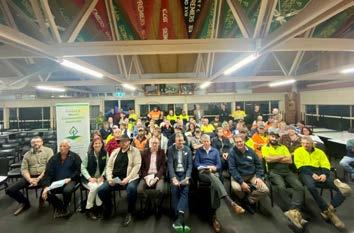
Mr Squires said there were 115 full-time jobs directly dependent on the timber industry in Orbost, and esti mated a further 60 “periph eral” jobs would be affected by the closure.
“We know there are a bit under 500 full-time jobs in
the Orbost district. So the 115 jobs represent 25 per cent of all full-time jobs in the district. It’s quite signifi cant. And that’s just the di rect employment,” he said.
Mr Squires said the num bers were obtained last year by calling VicForests, as well as all timber indus try contractors, sawmills, and companies and asking how many people they em ployed.
Addressing the large crowd, the Nationals Mem ber for Eastern Victoria Re gion and Assistant Shadow Minister for Public land Use, Melina Bath acknowl edged the critical impor tance of a sustainable na tive timber industry to the town’s future.
“Victoria has a world class and environmentally sus tainable hardwood timber industry which is being de stroyed by the ideologically driven Andrews Labor Gov ernment,” Ms Bath said.
“It is quite shocking that Labor MPs have no qualms when making decisions about the demise of our timber towns, but cruelly ignore requests to meet with locals and listen to the plight of our Orbost com munity who are bearing the brunt of Spring Street deci
sions,” she said.
“Almost 40 per cent of Orbost’s workforce is em ployed directly or indirectly in the native timber indus try.”
Ms Bath said the town’s viability was dependent on harvest, haulage and mill workers and support indus tries including mechanics, hospitality, school teachers and healthcare.
“Our East Gippsland mills are being starved of wood supply – listening to locals, it’s clear their mental an
guish amid financial uncer tainty is palpable,” she said.
The Andrews Government was failing on every front to keep its promise to guaran tee timber resource supply until 2030.
“It is all ‘take’ and no ‘give’ in terms of harvesting area,” Ms Bath said.
“By gazetting the Greater Glider Action Statement, the Andrews Government has the power to close the loophole in the Code of Practice for Timber Pro duction, thereby reducing
loss of coupes through third party litigation.
“Along with my Nationals colleagues, I will continue to fight for timber jobs and the survival and prosperity of our timber towns,” she said.
“Only a change of Govern ment on November 26 will ensure our rural and re gional communities receive the respect they deserve, and Victoria continues to produce environmentally sustainable hardwood tim ber.”
ForestWorks is an industry-owned not-for-profit organisation offering services to support the skills development of the forest, wood, paper, timber and furnishing industries.
ForestWorks works with industry, government and the education and training sector to improve skills standards and qualifications and support the development of forestry-related industries, their people, and enterprises.
ATOTALof 19 species of flora and fauna have been recom mended for interim pro tection re-lating to forestry operations, according to the Threatened Species and Communities Risk Assess ment report.
The next step will be to prepare action statements for each species based on the manage-ment needed to conserve them all.
“All relevant social and economic factors will be considered in their prepara tion,” the re-port says, with the actions “feasible and proportionate to the level of risk” the species face.
“Any required permanent protections are due to be in place by May 2023.”
The government says the risk assessments concern ing forestry had to be un dertaken under Victoria’s modernised Regional For est Agreements (RFAs).
“The risk assessment was informed by input from sci entific experts”, published literature and spatial analy sis assessing the impacts over the next 20 years in all the RFA regions.
The scientists included 21 species experts, including staff from DELWP, the Royal Botanic Gardens Victoria, Country Fire Authority and seven independent environ ment consultants.
More than 1300 species were listed as threatened under the Victorian Flora and Fauna Guarantee Act in May 2021. Of these 61 were potentially affected by for estry operations.
A total of 32 were identi fied as at high or significant risk from forestry opera tions – nine in plantations and 23 in native forest.
“All hazards rated as me dium risk or higher will need to be considered in future manage-ment,” the report says.
This assessment was fur ther narrowed down to
19 species that were rec ommended for in-terim protections from forestry. These included three Spiny Crayfish, seven rainforest affili-ated species, and nine restricted and limited range plants.
The hazards affecting these 61 species were cli mate change, fire, forestry, habitat modifica-tion, inva sive species and threats to population health and resil ience.
The report notes the myri ad impacts on species from bushfires, some of which could modify some areas for decades, even centuries, with the danger exacerbat ed by more frequent and intense fires due to climate change.
“Bushfire management is the primary control for reducing the risk of major bushfires,” the report says, with fuel management the key. This is done through planned burns and newly introduced mechanical fuel reduction.

“While planned burning mitigates against bushfire risk for a range of values, it contributes to a total fire regime and may, in some circumstances and for some species, generate un-desira ble ecological changes,” the report says.
Machines that create fire
breaks around the planned burn perimeter lead to tem porary veg-etation loss and soil disturbance.
“The bush perimeter might also intersect with streams or drainage lines, increasing the risk of soil erosion and sedimentation. The use of machines may also facilitate the spread of weeds and pathogens,” the assessment says.
Forestry operations can have various effects, ac cording to the report. These include:
• Directly killing trees previously harvested and now listed as threatened.
• Soil disturbance and compaction from ma chines, potential soil ero sion and sedimen-tation of waterways.
• Removal, modification and fragmentation of the forest structure, and
• Edge creation, leading to micro-climate changes - more intense light, tem perature, humidity and wind strength in adjoining forests.
The report says heavy ma chinery, particularly on snig tracks and log landings, can affect the survival of many understorey species – for example, Baw Baw berry or Mountain Bird-orchid.
“Burrowing and spiny crayfish are vulnerable
to sedimentation impacts arising from roads, stream crossings and unbuffered drainage lines. Small wet land plants are also vulner able to sedimentation ef fects,” the report says.
Regeneration burns have an impact on recruits, such as Forest Geebung, Sat inwood, and Tullach Ard Grevillia, or on surviving mature individuals such as Tasmanian Wax-flower.
Plantations also have an impact, says the report.
“Rapidly growing trees draw down on the water table and may reduce surface run-off, leading to the drying out of wetlands and damper habi tats,” it says.
“Similar impacts on hy drology may also occur after native harvesting or wildfire, when large areas of vegetation rapidly re grow. Other species may be impacted by chemical runoff and spray drift from ad jacent plantations.”
The report warns that spe cies affected by the 2019-20 bushfires may be at higher risk than otherwise due to the uncertainty about the bushfire’s impacts and “the implications for the addi tional impacts that forestry operations might have on those species and commu nities, as they recover”.
A Scion scientist who helped to discover a bio logical control for the un wanted giant willow aphid is among the finalists of the 2022 New Zealand Bi osecurity Awards.
Stephanie Sopow, a for est entomologist at Scion in Rotorua, played a lead ing role in the team from Scion, Plant & Food Re search and Apiculture NZ whose collaborative re search led to the release of a parasitoid wasp from California as a biological control for the invasive gi ant willow aphid (GWA), Tuberolachnus salignus.
OneFortyOne has ap pointed Mike Bloomfield to the newly created Ex ecutive General Manager Wood Products Australia role and Nigel Boyd gen eral manager of the Ju bilee Sawmill in Mount Gambier.
Mr Bloomfield has held the position of General Manager Sales and Mar keting at OneFortyOne since 2017. In this time, he has had a significant im pact on the growth of One FortyOne’s Wood Products business in domestic and international markets.
Mr Boyd began his ca reer in the timber indus try in 1992 as an appren tice Saw Doctor. He has worked across optimisa tion and leadership func tions in progressively more senior roles. He has been Jubilee’s Production Manager since 2018.
TasRail has provided its customers with around three million tonnes of rail haulage in the past financial year, according to Corporate Affairs and Strategy Manager, Neale Tomlin.
“As a total rail freight task this equates to an im pressive 499 million net tonne kilometres – the second largest rail task since TasRail was formed in 2009,” Mr Tomlin said.
Several years ago, Tas Rail identified the forestry sector as an opportunity for ongoing growth. To day, transporting whole logs is TasRail’s fastest growing customer seg ment.
NSW has expressed support for the expansion of tim-ber plantations in NSW as recommended by an Upper House timber inquiry as the best way to guarantee timber supply.
The expansion of planta tions was a key recommen dation of the upper house inquiry into the fu-ture of the timber industry.
“Significantly, the report acknowledges the enor mous contribution NSW forest industries make to the economy, regional com munities, and our everyday lives by making essential wood products we depend on,” AFPA NSW CEO Victor Violante said.
The committee recom mended the government pump the brakes on the park until an “independ-ent and comprehensive” study was conducted.
He also welcomed the in quiry’s pragmatic approach to calls to end native forest ry in NSW.
The inquiry reported that the deficiencies in the Great Koala National Park Eco nomic Impact As-sessment and Environmental Benefits Analysis were significant enough that they would not be re-lied upon to make a rigorous and objective deci sion on the proposal to es tablish the park.
“NSW cannot afford to lose any more of its hardwood timber production,” Mr Vio lante said.
“It would result in signifi cant cost and supply chain impacts for the housing construction sector and a range of other industries that rely on hardwood tim ber products.
“It would also increase our reliance on imported products that would largely be sourced from tropi-cal forests that are at high risk of deforestation and illegal logging,” he said.
“In contrast, NSW for est industries operate to the highest environmental standards in the world, re placing every tree after har vest to ensure there is no net loss in forest coverage.”
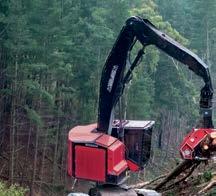
“The demand for tim ber and forest products is growing and cannot be met with existing supply,” com mittee chair Mark Banasiak said in the report.
The Shooters, Fishers and Farmers MP said a lack of vision from successive gov ernments had left the tim ber industry exposed.
The committee heard mixed opinions during public hearings but one thing became clear.
“We are heading towards a timber supply crisis in NSW,” Mr Banasiak said.
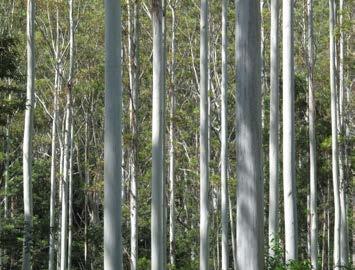
The Black Summer bush fires wiped out native hard wood plantations and the pandemic also affect-ed supply, but he said these were not the main contrib utors to the crisis.
“The timber and for est product industry has suffered from a lack of
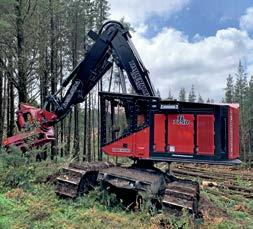
longer-term vision over suc-cessive governments to address supply issues, in dustry needs and commu nity expectations.
“The impact of this can not be overstated.”
Mr Banasiak said urgent action was desperately needed and encouraged the government to read the report’s 24 recommenda tions.
The report found the de mand for forestry products was growing and could not be be met with ex-isting supply.
It also found there had been no increase in addi tional plantations over the past decade.
Timber NSW general man ager Maree McCaskill de scribed the report as “pretty fair”.
“We expected that it would be dreadful, but it was actu ally quite reasonable.”
Ms McCaskill said she had been surprised the com mittee came out against the evidence for the creation of a Great Koala National Park.
“My worry is the govern ment has to respond to it,”
Ms McCaskill said.
“Will they? Before we face the election in March? My gut feel is I don’t think they will respond to it.”
Ms McCaskill said that in incoming Labor govern ment post the March elec tions next year would have “some ideologues … who no doubt will become part of the cabinet”.
“I think a lot of work will have to be done by the un ions because their essential interest is in making sure their workers don’t lose their jobs.”








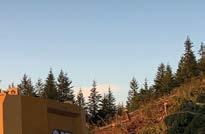













AS a resource econo mist I have spent the best part of three decades of my professional life working either on ap plied economic research, Government policy or in dustry advocacy related to plantation development in Australia. From that experi ence, I thought it timely to impart some observations about the challenges and potential solutions to get ting more wood production trees in the ground.
Over this time there have been a number of lessons, as well as individual suc cess stories and new mar ket drivers, that I believe provide a recipe as to how we can begin to formulate a new wave of sustainable investment in wood produc tion trees on farms.
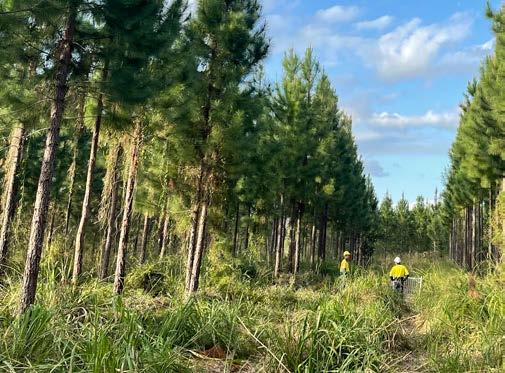
In shorthand I am calling this the triple-scoop path to planted wood investment. More on this in a minute.
Most of us working in the sector understand the economics of wood planta tions, with high up-front costs and long-time periods until tree harvest returns. This has made it difficult for farmers to commit large tracts of land to a long-term crop such as wood planta tions, when compared with cropping or grazing.
The challenges and les sons for future investment in wood production in Aus tralia can also be learnt from historical policy and operational experience. This experience included large scale state interven tion in the development of the early softwood planta tions in Australia from the late 1960s to the 1980s. In this model, governments wore the risks of initial in vestment and reduced one of the most significant cost factors - being the cost of land. State governments, with low interest loans from the Commonwealth, were
able to generate economies of scale and sufficient re turns by focusing solely on crown land including the clearing of naturally veg etated areas. This avoided the higher relative costs from using private agricul tural land. The target rates of return were also lower than for a commercial oper ator, given broader regional development and ‘self-suf ficiency’ goals by Govern ment.
While this intervention
has changed substantially since the 1960s. Hence new solutions that require the participation of private landowners and farmers on cleared land need to be found.
Another major lesson is the rise and fall of Man aged Investment Schemes (MIS) used as an invest ment instrument for over a decade from the 1990s to early 2000s. These schemes were able to utilise taxation treatment advantages and

ers from any complemen tary agricultural activities. The structure of the taxa tion arrangements also led to the collapse of many MIS companies in the wake of the Global Financial Crisis, given a focus on pooled cap ital and planting rules dic tated by taxation provisions rather than the underling market fundamentals for each site. While there have been a few small-scale MIS success stories, these exam ples have largely incorpo rated some of the principles of integrated farm manage ment. This principle for sustainable investment is discussed further below.
did help to generate the high-quality softwood plan tation resource of around 1 million hectares we have to day, the drivers and condi tions to emulate this model are no longer applicable. Concerns over the envi ronmental impacts of land clearing for plantation de velopment, and the role of Governments in investing directly in new plantations,
pooled capital to fund the planting of land for mostly short rotation pulpwood plantations. Problems with the schemes soon became apparent in terms of their sole focus on the tax advan tages and block plantings to maximise economies of scale for only one primary product - being wood fi bre. This in effect alienated many landowners and farm
ECONOMISTS have also long recognised that part of the chal lenge of investing in wood plantations on private land is that many of the public benefits from tree plant ing are not fully captured in markets, such as envi ronmental amenity, biodi versity, water quality and carbon sequestration. We all know this has recently changed for some public benefits, most notably with the global development of carbon markets. The evolu tion of carbon markets now provides an opportunity to gain an additional income stream from wood produc tion and address an impor tant market failure. By their inherent nature, trees pro ducing wood also sequester and store large amounts of carbon as they grow as well as through the service life of the harvested product. Access to carbon markets goes some way to improv ing the rate of return from wood plantations, through more regular early to midrotation carbon income.
In a carbon-constrained world, farmers are also looking at opportunities to reduce or offset their emis sions footprint as ‘carbon neutral’ agriculture. Planted forests can provide effective carbon sequestration and a means for reducing the impact of fossil fuel inputs for agriculture and other
● An example of a silvopastoral trials research site with pasture alleys, pine and cattle in North Queensland, 2022.
emissions such as methane from livestock production. The combination of wood and carbon values does start to improve the rate of return for planted trees in the landscape, and address some of the challenges of a long-time period until tree harvest returns.
Finally, I would argue that the third critical ingredient for successful investment is the role of trees in deliver ing agricultural productivity and other land management benefits such as climate re silience in times of drought or flood, wind protection for crops, erosion control, shelter for livestock and improved calving rates. The paradigm thinking for in vestment is the agricultural enterprise and what wood production trees can do to deliver whole farm benefits rather than simply focusing on how much land is need ed to produce maximum plantation wood stocking.
Planting designs can vary depending on the objectives and conditions of each indi vidual farm. In 2009, I was lucky enough to undertake an international study tour of agroforestry practices and related R&D in North America and Europe with a Churchill Fellowship. The tangible benefits of agrofor estry were clearly evident from a global perspective, but also some of the chal lenges in terms of raising awareness of the holistic benefits to the wider farm ing community. Since that time there has been an ever-growing body of inter national R&D on the joint benefits of integrating ag ricultural production and other land management val ues with forestry.
Without this third prin ciple of farm productiv ity, planted investment for wood production will likely fail to provide a long-term sustainable investment. By not taking into account the needs of the farmer and the broader role of trees in the farming enterprise, most investments will suffer the pitfalls of large opportu nity costs. A prime example would be a dominant focus on broad acre plantations rather than a mix of planted trees and farm production. In this scenario the farmer has limited alternative in come and other land use options, with a lower longterm commitment and pas sion to replant in successive rotations.
Here is where I’d like to
make an analogy with an ice-cream parlour which we can all enjoy. We usually grapple with an internal di lemma as to whether to go for the one, two or three scoop-cone. In those few seconds we are weighing up the relative costs and sizes (or benefits) from the extra scoops, where each extra scoop will usually cost mar ginally less than the pre vious scoops, making the double or triple always an attractive option.
In the case of a new path for investment in planted wood production trees, I would say we should always go for three flavours and the triple cone!
In essence, the early state intervention and MIS mod els for wood plantation in vestment were like focusing on single cone ice creams to satisfy a large appetite. There was only one objec tive being wood production (one flavour) and with a subsidised land cost or tax incentive there was an abil ity to spend lots of money to achieve that set goal. How ever, once those subsidies or incentives are removed, this is no longer feasible. It just doesn’t feel right to keep buying single cones at a higher relative cost when there may be better alterna tives (like a double).
With the advent of carbon markets, a farmer or land owner can now invest in planting trees for both wood production and carbon se questration outcomes. This is like buying a double cone with two flavours (outputs), generating a higher rate of return than producing ei ther one or the other prod uct on its own. In terms of the ice-cream parlour, you are getting a double
scoop with two flavours at a cheaper price than if you had to buy a single cone of each flavour. By purchasing that double, we are going some way to maximising our enjoyment within our available budget.
However, if we are to take a truly long-term view to grow and sustain more wood production trees on farms, we need to look at a third scoop. By having a triple scoop, we are able to satisfy a larger appetite (i.e. demand) but with the added bonus of three delicious fla vours and an even lower av erage cost per scoop.
This triple-scoop pathway to new investment makes
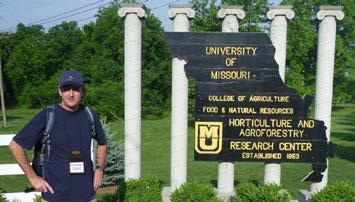
farming the land for food production. The agroeco logical functions of trees on farms are also an obvi ous ally of the new thinking around ‘regenerative agri culture’, being the latest la bel for sustainable farming practices.
Taking these lessons and historical perspectives on board, future policies for wood production invest ment need to focus on promoting these comple mentary outcomes. This emphasis on multiple out puts need not detract from the principle of compara tive advantage, whereby the landowner should still assign activities to the most
tively capture carbon cred its, farm forestry needs to be brought into the main stream rather than treated as a cottage industry. This would entail more effort into farm level education and awareness and applied R&D to better quantify and demonstrate the benefits of the triple-scoop pathway to planted trees on farms.
I would argue that many of the recommendations from my 2009 Churchill Fellow ship remain just as relevant today, and even more so, given the challenges de scribed above when focus ing on only single output objectives. Some of the con cerns over the role of farm forestry in helping meet our national aspirations for greater wood production relate to issues of lack of scale, the dispersed nature of many small-scale plant ings and the planting of spe cies not generally suited for major processing and enduse markets.
more sense for a farmer and revolves around max imising the joint benefits from wood production, car bon mitigation and on-farm agricultural productivity. By focusing on the combined benefits from all three fac tors, farmers are likely to generate higher long-term benefits than focusing on any single goal. It also pro vides a diversified income base to withstand market volatility and build enter prise resilience with an ongoing connection with
relevant parts of the farm that generate the highest re turns. This can be achieved by mixing activities at a paddock or stand level (i.e. on the same unit of land) to larger zoned areas across the farm to generate holis tic benefits and diversified income.
IN addition to putting in place appropriate carbon methods and activities in relevant mar kets such as the Emissions Reduction Fund to effec
I would argue that these challenges are precisely the reason we need to more actively grow and promote farm forestry with a triple scoop pathway. The chal lenge for us is to build great er awareness and uptake one paddock and one farm at a time, which would sim ply diminish any disecono mies over time. Experience from overseas does provide some examples of achiev ing economies of scale for the timber industry from many small landowners in Scandinavia and parts of the United States.
By not doing so, we may simply consign ourselves to the policy challenges of the past two decades where new plantation investment has stalled, or gone back wards in some regions through conversion back to other land uses. This lack of investment and decline can be partly explained by a lack of focus on the triplescoop pathway. And for the record, my favourite fla vours for a triple scoop are chocolate (wood), mint (car bon) and hazelnut (farm productivity)!
The views in this article are my own and should not be attributed to any company or organisational level affiliations. I am presently the CEO of Timber Queensland and a non-Executive Director of Forestry Australia.
This triple-scoop pathway to new investment makes more sense for a farmer and revolves around maximising the joint benefits from wood production, carbon mitigation and on-farm agricultural productivity.
FORESTWORKS has received funding for the implementation of support products for the Log Haulage Code of Prac tice.
The project will develop two products that will sup port recognition, adop tion, implementation and compliance to the Log Haulage Code of Practice that is currently being as sessed by the NHVR for registration.
The products are:
• A set of educational videos directly related Log Haulage for free, widely accessible industry use
• An updated Log Haul age Manual that reflects, incorporates, and supple ments the Log Haulage Code of Practice for free, widely accessible industry use.
The funding has been made available as part of the National Heavy Vehicle Regulator’s Heavy Vehicle Safety Initiative, supported by the Australian Govern ment.
In all $3.5 million will be invested into the projects through Round 7 of the HVSI program to improve heavy vehicle safety.
The projects are created for industry, by industry, to make their workplace safer.
The Australian Govern ment has invested in 132 HVSI projects over six years to progress a safer, more productive heavy ve hicle industry.
AFPA’s Forest Industry Safety Manager Amanda Bell said the WHSS had a key role in each successful proposal.
“The WHSS helped devel op each of the two success ful HVSI proposals and forest industries will cer tainly benefit from them,” Ms Bell said.
“It’s important the WHSS continues to be involved in shaping these national initiatives to ensure they’re as relevant as possible for Australia’s forest industries which rely heavily on safe transportation of timber, fibre and the many essen tial products our industries create.”
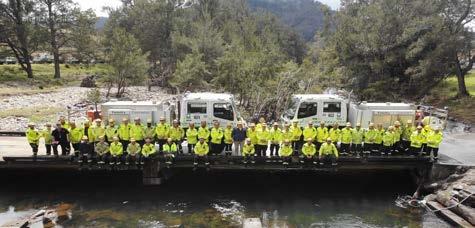
FORTY-TWO Forestry Corporation of NSW firefighters honed their skills recently in a fiveday training camp at Mount Seaview Resort near Wau chope in preparation for the fire season ahead.
Staff from the Mid North Coast, Hunter, Far North Coast & North Coast For est Protection Areas were trained in essential fire fighting skills such as fire behaviour, tactics and strat egy, leadership, command, control and communica tions, and how to operate the range of appliances and equipment used at fires.
The five-day intensive
training program is de signed to get new recruits nationally qualified as for est firefighters.
Other more experienced firefighting staff upgraded their qualifications in Ad vanced Firefighter and Crew Leader roles.
The camp was a mixture of theory and practical ex ercises to get staff fire-ready for the season ahead, said Forestry Corporation’s Fire Training & Operations Of ficer, Adrien Thompson.
“The camps are essen tial for developing a skilled and capable workforce for the fire season ahead,” Mr Thompson said.
“Our training program is comprehensive, and re cruits also get the opportu nity to learn other skills like using chainsaws, first aid, chemical use and driving 4WD vehicles and tankers when they return to their depots.
“Safety is always at the top of this list though – our firefighters’ wellbeing is our biggest concern, and it all comes back to correct train ing and procedures.
“We take our firefighting responsibilities incredibly seriously – our training en sures everyone from our most experienced firefight er through to our newest re
cruits are fit and ready to be deployed to the fire front.
“We also send crews to assist on large bushfires across all tenures within their local areas, interstate and even internationally, so we need to ensure we are at the top of our game.”
Forestry Corporation is responsible for preventing and managing fires in two million hectares of State forests across NSW.
To find out more about Forestry Corporation’s fire training, view the video at https://youtu.be/ VoWU284o8EA or visit www.forestrycorporation. com.au
THE Australian Forest Products Association has welcomed the Federal Government’s con sultation process to remove regulatory barriers prevent ing new timber plantings participating in the Emis sion Reduction Fund’s, AFPA Acting Chief Execu tive Officer Victor Violante said
“The Federal Labor Gov ernment has taken a signifi cant step towards delivering on its election commitment to scrap the ‘water rule’ with the release of a consulta tion paper on changes to the Carbon Credits (Carbon Farming Initiative) Rule 2015,” Mr Violante said.
“The ‘water rule’ prevents plantation forestry and farm forestry project access to the carbon market in are
as with annual average rain fall above 600mm – thereby holding back much need in vestment in new timber and fibre plantations in most timber processing regions.”
AFPA has been campaign ing to remove this regula tory barrier for many years, as access to the carbon market will be a key driver for growing Australia’s tim ber plantation estate. New plantations are urgently needed to help Australia meet its future timber and wood fibre needs and make a significant contribution to Australia’s emissions reduc tion targets.
“The Federal Government has a much-needed goal to get one billion new produc tion trees planted by 2030 to secure Australia’s future timber and fibre supply
for everything from house frames to packaging and pa per products. The removal of the ‘water rule’ would be a big step to open up poten tial new investments and get new trees planted,” Mr Violante said.
“Recent AFPA-Master Builders Australia research highlighted that Australia will be 250,000 new houseframes short of demand by 2050 if Australia’s doesn’t achieve the billion new trees by 2030 goal. That’s cities the size of Newcas tle and Geelong combined. Furthermore, Australia has the golden opportunity to ready itself for insatiable international demand for sustainably sourced wood and fibre, with global de mand forecast to quadruple by 2050.”
AFPA also acknowledged the previous Government’s progress in removing the ‘water rule’ in several key forestry regions. The changes proposed in the discussion paper will see the regulatory barriers re moved in the remaining forestry regions, including Queensland, Central West NSW, South East NSW, and the Northern Territory.
“The removal of the ‘wa ter rule’ would be modest and sensible reform to en courage investment in new timber and fibre plantings in key strategic forestry ar eas nationwide. We encour age anyone with an interest in ensuring we have a sus tainable supply of timber and wood fibre to support the removal of the ‘water rule’,” Mr Violante said.
THREE million dollars for research propos als to help develop forest and wood products industries in the state’s Green Triangle has been provided by the Federal and South Australian govern ments.
Researchers will be able to apply for up to $500,000 to assist with projects, through the Mount Gambier Centre of the National Institute for Forest Products Innovation (NIFPI).
Federal Minister for Ag riculture, Fisheries and Forestry Senator Murray Watt said the third round of funding through the NIFPI would help boost sustain ability and economic ben efits in Australia’s forestry industry.

South Australia’s Minister for Forest Industries Clare Scriven said NIFPI’s Mount Gambier committee was now seeking research pro posals addressing priority areas for the local forest and wood products industry.

“Since it was established in 2017, the Mount Gam bier NIFPI has funded 12 re
search projects worth $8.4 million, with funding from the forestry sector from the Australian and South Aus tralian governments,” Ms Scriven said.
“With the latest round of funding now open, I en courage industry and re searchers to develop pro posals that will specifically benefit the forest industries in the Green Triangle and more broadly.

“A key election commit ment by the Malinauskas Government was to in crease funding for forestry research, an industry that contributes a significant amount to the state’s econ omy.

“Additional funding will
provide the industry with opportunities for expanded research and development in Mount Gambier,” she said.
The research and develop ment priorities of the Green Triangle’s forest and wood products industry include:
• Development of new products – composites, en gineered wood products, extractives, bioenergy, in creased timber recoveries and ecosystem services
• Innovative, safe, effi cient, productive, diverse and inclusive workplaces
• Tree growing improve ments, including genetic gain, climate change im pacts, nutrition and man agement
• Improved utilisation of digital data, including for fire detection, forest man agement and mill opera tions and

• Growing the productive forestry estate through im proved water use for better outcomes for industry, the environment and the com munity.
“Before we came to Gov ernment, we committed to getting more trees in the ground, investing in value adding so more timber products are made here, and training the timber in dustry workforce in a way that recognises the unique needs of the sector,” Sena tor Watt said.
“So whether it’s develop
ing new forest products, utilising digital data for fire detection or improving tree growth or water use, pro jects approved under this third round will help deliver on those commitments."
The South Australian For est Products Association’s CEO Nathan Paine wel comed announcement.
“SAFPA has worked close ly with the Malinauskas Government to promote in vestment in the innovation of forest products and to en sure future research and de velopment continues in the South East,” Mr Paine said.
“The NIFPI model for managing research and de velopment has been hugely successful and it’s critical the research centre contin ues in the Green Triangle, which is home to nearly 20 per cent of Australia’s plan tation estate and is recog nised as a world class saw milling and forest product manufacturing operation.”
Applications are now open, and close on No vember 21, 2022. For more information, visit https:// nifpi.org.au/
FOR the past seven years BOA Hydraulics has been determined to bring about change to the hydraulic hose industry.
Helping customers to un derstand the true cost of their burst hydraulic hose and machine downtime and giving them the ability to undertake their own repair and maintenance work, us ing their own tools and in ventory.
McDougall Logging in New Zealand was an early adopter of the BOA’s World Fastest Hydraulic Hose Re pair Solution, having the hose repair trailer onsite for more than three years.

“The main reason we went to the onsite BOApod trailer
with BOA is, they’re on the job, they’re onsite. You blow a hose that you don’t have a spare for and you’re up and running in 15 minutes. It certainly has been well worth its weight in gold,” says Raymond McDougall, the owner of McDougall Logging.
“We could be waiting any where from an hour to an hour-and-a-half for a hose doctor to get out to site,” he said.
“So straight away there is an hour-and-half that you are waiting to be up and running again. Where with this BOApod onsite, we are up and running in 15 to 30 minutes max.

“If you weigh that up out
of a week, you virtually have saved two hours, maybe two-and-a-half hours in a week, which is definitely a savings.”
Keeping on top of ma chines with preventive measures is the best ap proach to avoid larger is sues later.
With the BOApod, McDou gall Logging have the con trol to preform hydraulic hose maintenance, chang ing hoses before they blow.
Mr McDougall says the
three key benefits of pre ventative maintenance are:
“You haven’t got the down time onsite.”
“You are not pouring oil into the ground.”
“You’re not holding the crew or a truck up because you can get it sorted before it blows to pieces.”
BOA is certainly challeng ing, the way things have always been and customers will look back on this time before they invested in a BOApod and ask why did it
take so long to change our operating model.
“The money that they save you in downtime, and pouring oil on the ground, outweigh the cost of the trailers,” McDougall says.
“If you look at it overall, the BOA solution is certain ly beneficial for what we are doing out here. If you are remote, I can’t see why you don’t have one. I would recommend to anyone that is 30-40 minutes out of town - you will save money.”
ASINGLE tree does not make a forest –just yet. Scion is de veloping and testing a range of precision forestry tech nologies with Hawke’s Bay forestry company Pan Pac Forest Products to make a ‘forest of one’ a reality soon er rather than later.
A forest of one means that we are effectively able to ap ply forestry management decisions to individual trees, explains Scion au tonomous systems scientist Robin Hartley. The idea is not just conceptual – it is at or very near reality for a surprising number of for estry management opera tions.
“The future of precision forestry is not just sitting on a lab bench – it’s being used in the forest now,” says Hartley.
Pan Pac is moving to a pre cision forestry management model at a rapid pace. Man aging 35,000 hectares of for estry, Pan Pac is a vertically integrated forestry products company. It uses 725,000 tonnes of logs in its own sawmill and 670,000 tonnes of residual and pulp logs are sent to the pulp mill. Con sistently supplying the right type of log to its own mills is crucial and anything that can potentially interrupt that log supply is treated se riously.
Pan Pac forestry manager Sean Wright explains that current precision forestry technologies, when used together, will result in a seven percent improvement in final crop value per hec tare across Pan Pac’s forest estate. These sorts of effi ciency gains and the ability to de-risk possible future la bour shortages will be cru cial to help forestry compa nies thrive and innovate in the future.
“The reality of our in dustry is that there are not enough skilled labourers willing to take up work in our forests year-round.
“We need crews working in planting, pruning and thinning at different times of the year and it’s getting harder to source labour in the Hawke’s Bay. If allowed to continue, a shortage of skilled labourers could put future profitability of our processing operations at risk,” he says.
Scion New Value from a
Digital Forest and Wood Sec tor portfolio leader Claire Stewart says it’s heartening to see a forestry company such as Pan Pac, who have a willingness to see things differently, put their own funding towards operation alising precision forestry.
“There is an openness to work in partnership to change the way things have traditionally been done,” she says.
The Pan Pac sawmill re quires a consistent supply of quality pruned logs and this means the manage ment of pruning operations is critical. All decisions re lated to the timing of prun ing, which trees to prune, as
they are swamped in un dergrowth and surrounded by branches. They literally cannot see the wood for the trees.
This means that, by neces sity, forestry management works to the average tree.
the upper limit of where it is safe and practicable to prune using silvicultural crews, so robotic pruning is a future reality.
Scion and Pan Pac are cur rently working on a model that uses spatial layers, de rived from remotely sensed and other data, to predict the optimal planting loca tions for planting a 750 hec tare radiata pine stand. The next step, spraying the site with herbicide, requires some heavy lifting (literally) and that’s where Taurang abased R&D company En vico come in.
plication by helicopter or potentially spot spraying on foot. There are also signifi cant efficiency gains to be made using UAVs compared to the traditional knapsack spraying methods. When combining remote sensing tools with powerful com puter analytics to detect species like blackberry, the same technology can be used to control compet ing grass or weed growth around individual trees fol lowing planting.
well as pruning height im pact on clearwood volumes.
Increasingly, these deci sions will soon be able to be made from remote sens ing data and powerful algo rithms that consider indi vidual tree qualities, such as tree height, their position relative to other trees in the stand and location. At individual tree level, prun ing decisions are virtually impossible to make from the ground. A silviculture work crew cannot effec tively evaluate all the fac tors to choose the ideal tree to prune in a stand, given
“Average is rarely, if ever, optimal,” says Wright. “Some trees will be pruned too early and others too late and often the wrong trees are pruned.”
To increase the volume of pruned logs from these re motely selected trees, prun ing will move from an av erage of around six metres (the height crews can reach from the ground) to 10 me tres, which can be pruned by robots. This increase in pruning height means that Pan Pac can harvest two pruned logs per tree. Ten metre pruning height is at
Envico has many years of experience using un manned aerial vehicles (UAVs or drones) for pest control work. Envico direc tor Cameron Baker says they have been trialling a drone capable of apply ing 20 litres of herbicide in one flight. That would spray about 900 trees per flight. A larger model UAV, which they intend to use with Pan Pac, will spray around 2,000 trees per flight, or around 2.5 hectares. The repeat ability of the technology is where it really comes into its own, says Baker.
“The ability to perform follow-up release spraying at the same points is auto mated by having one set of GPS coordinates for the tree locations.”
Precision aerial applica tion of herbicide greatly reduces the total volume applied per hectare when compared to broadcast ap
Hartley says aerial sensing from UAV and fixed-wing planes, with precision GPS location, lays the ground work for a range of meas ures to be made at individ ual tree level. These include tree health and drought stress status, prediction of soil and crop nutrition, competition and weed in festation, height analysis and growth rate optimisa tion.
“The combination of new precision forestry tools means that the forester of the future will increasingly be using their laptop and will be intimately familiar with remote sensing tech nology, GPS and machine learning.


“Battle scars from wading through dense thickets of blackberry might become a distant, albeit fond, memo ry,” he said.
This research is funded by Pan Pac Forestry.
THE Tigercat D7 con trol system com bines a solid and field proven hardware and bucking control system with a Tigercat developed head control and user in terface.
The system offers power ful functionality, simplic ity and intuitive operator navigation.
There are two types of bucking control avail able for D7. Priority-based bucking logic utilizes a list of operator-entered log specifications sizes to de termine how best to pro cess the tree.
D7 Optimization level uses a value-based logic.
Using multiple layers of matrices correlating price, demand, and production limits to each log size un der each tree species, the control system optimizes each processed tree to achieve the best value. These matrices are usu ally programmed by the timber buyer.
Both Tigercat D7 Priority and Optimization levels of fer StanForD Classic, Stan ForD 2010, and PDF pro duction reporting based on contracts, operators, spe cies, and product groups.
The reports provide to tal quantity and volume, as well as per species and product group quantities and volume. Reports can be viewed on screen, or exported for later analy sis. D7 also sends pro duction volume data to RemoteLog®, Tigercat’s op tional telematics system.
D7 can be equipped with a GPS receiver and the GeoInfo software. This provides an active naviga tion application using the machine’s current position on a georeferenced map.
Work site maps can be viewed on the in-cab dis play screen, allowing the operator to easily view the site layout, track the move ment of the machine, and view production informa tion.
Restricted areas can be marked with boundary alarms.
D7 is currently available for the Tigercat 534 har vesting head.
THEPonsse Mammoth forwarder, powerful in terms of productiv ity, expands Ponsse’s for warder range to the new category of 25-ton load-car rying capacity.
The Ponsse Mammoth for warder ensures productive harvesting, also at the most demanding logging sites.
Equipped with the step less Continuously Variable Transmission (CVT) system and the Ponsse K121 loader, Mammoth’s sturdy frame structures and super-strong hydraulics ensure that large stems and heavy loads can be transported effortlessly.
In the Ponsse Mammoth forwarder, the forest ma chine operator’s ergonom ics has been addressed every step of the way, and it can be equipped with new features that improve the operator’s ergonomics, such as Active Cabin and Active Seat.

Ponsse Buffalo is the bestselling Ponsse forwarder in the world. Its technical systems, reliability in all conditions, combined with its broad range of customi
zation options, makes the Buffalo a dependable tool built to meet the individ ual needs of each custom er. When customers can choose from a load-carry ing capacity of 14 to 15 tons, a reach ranging from 7.8 to 10 metres, a long bogie. The model series consists of eight-wheeled base ma chine that can be modified in diverse ways. Equipped with the Active Crane boom control system and other new features makes work easy.
The durable basic struc ture is reliable also in heavy-duty operations. The technology, tested in ex treme conditions, caters for productivity and helps the operator to keep work ing. Its powerful engine, combined with its neverending tractive force and 20-ton load-carrying ca pacity, ensures that wood is moved efficiently, also at
sites located on slopes, and over long distances, with fewer trips. Equipped with the Active Frame cabin suspension system, avail able as optional equipment, makes working even more pleasure. It prevents the operator from swaying in the cabin and helps to work during long shifts.
Ponsse forwarders (ex cept for Bison) can now be equipped with PONSSE Ac tive Cabin, an effective cab in suspension system with a simple structure. It helps forest machine operators keep going, even during longer shifts, by suspend ing any stress on the cabin.
Active Cabin is available for the Buffalo, Elephant, El ephant King and Mammoth forwarders. Ponsse Bison is equipped with Ponsse’s ad vanced Active Frame cabin levelling system.
Ponsse Active Seat is a seat function developed based on forest machine opera tors’ needs. The new Ac tive Seat improves usabil ity, as it turns and follows the boom tip according to crane movements, increas
ing the forest machine op erator’s productivity. Pon sse Active Seat is available as an option for all PONSSE forwarders equipped with the Ponsse Active Crane loader control system.
Ponsse Active Crane is a loader control system for forwarders, with which the operator controls grapple movements instead of indi vidual functions, allowing the operator to concentrate effectively on working with the loader. Active Crane is easily controlled using two levers, one of which controls the grapple height from the ground and the other controls the direction of movement.
Ponsse Forwarder Extra Display is an additional display for forwarders. It mirrors the view of the Opti display installed in the cabin, which remains hid den behind the operator’s back when driving in the engine’s direction. By fit ting an additional display, the operator does not need to turn their seat to watch the display when the driv ing direction changes.
A

FOR nearly 50 years, loggers have relied on Waratah Forestry Equipment as a one-stop shop for versatile heads that are proven as workhorses in the woods.


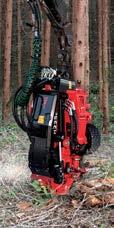

Whether it’s debark ing; harvesting; process ing; working in softwood, hardwood or mixed stands; Waratah’s lineup of 200, 400 and 600 Series heads are up to the challenge.
Durable debarking with the H225E
One of the manufacturer’s newest heads on the mar ket, the H225E, is a power ful, high-capacity harvester head purpose-built for single-pass eucalyptus de barking. This workhorse is designed for use on large, wheeled harvesters and ex cavators.
The H225E, part of Wara tah’s two roller 200 Series line, features a new highperformance valve for bet ter oil flow and greater hy draulic working pressure
capabilities as well as a heavy-duty measuring sys tem and redesigned swept cast arms. Its delimbing knives, fixed debarking tools in the frame, and pat ented variable stem rotating rollers ensure excellent de barking from large to small diameters. Additionally, the H225E’s durable hose rout ings and ease of daily ser vice add to its reliability.
“Building on the high-per forming H215E model, the H225E is built to work with even more efficiency,” said Brent Fisher, product mar keting manager for Wara tah. “The H225E’s improved features facilitate enhanced debarking productivity and durability.”
When it comes to working in the toughest woods, log gers can rely on the H425X, one of Waratah’s newest heads in its 400 Series line. This heavy-duty head is pur pose-built for tracked carri ers and features a powerful control valve and four-roller feed arm geometry that en sures a solid grip. With an extreme duty main saw box, the rugged and agile H425X especially excels in mixed stand harvesting.
“With a great balance of features such as its highperformance control valve and drive motors, precision delimbing and heavier steel plating, the H425X is built for durability and perfor mance,” Fisher said.

The H425X helps opera tions stay up and running with its improved hose rout ing from boom to harvester head and from the valve to feed motors, keeping hoses well-protected from limbs
for improved durability and simplified servicing. A new twin retainer front knife and strengthened upper delimb castings provide du rable delimbing. Key com ponents are protected with a newly styled and stronger valve cover and hinges as well as reinforced drive arm covers. Additionally, ser vicing and maintenance is quick with new handles and a tool-less entry for access to a simplified hose layout. Plus, a larger saw oil filler provides faster fills with
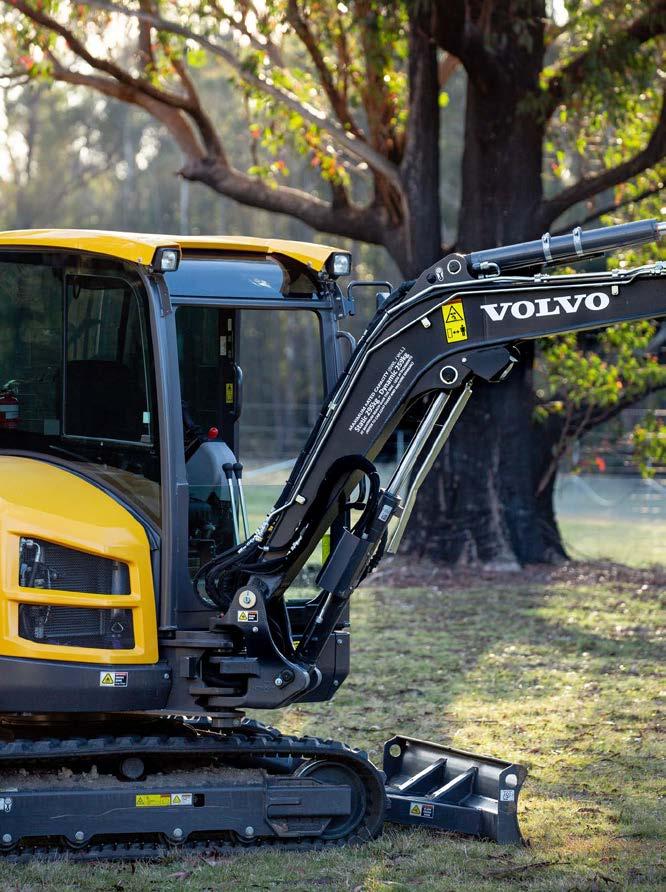



2019
THE two interrelated fac tors impeding future growth in the Green Triangle region are the availability of land and restrictions over water licenses currently in place in the Limestone Coast, ac cording to OneFortyOne.
And the forest grower and forest products company believes the water licensing conditions faced by planta tions in South Australia are the biggest threat to the supply chain in the region and that under current wa ter allocation limits, there may be a loss of more than 25,000 hectares of planta tion area in the region.
2016
AS THE nation heads to ward the 2016/17 bushfire season, it is critical that Australian firefighters and emergency response agen cies are able to call on additional support from across the country to meet the heightened resource demands in the face of an emergency.
For the first time they have the backing of the National Resource Sharing Centre, working within the National Aerial Firefighting Cen tre and part-funded by the Commonwealth AttorneyGeneral’s Department, to support the facilitation of interstate and international sharing of personnel and equipment.
2011
NEW FIGURES showing the area of Australian tree plantations has shrunk re flect a problem for the na tion’s future wood and car bon offset needs, says the Australian Forest Products Association.
A report by the Australian Bureau of Agricultural and Resource Economics and Sciences found the overall area of plantations dropped by 0.6% between 2009 and 2010. It has also reported the smallest area of new plantations establishment since the early 1990s.
“Australia has a major challenge in meeting our future wood demands. A population of 35 million by 2050 will require 7.1 million new dwellings,” said AFPA chief executive officer Da vid Pollard.

PONSSE and Epec are introducing the PON SSE EV1, an electric forest machine technology concept. While the forest machine will be commer cially available later, Epec’s technology can already be used in electric or hybridelectric commercial vehi cles and non-road mobile machines. Ponsse’s tech nological concept is a peek into the future, paving the way for technological de velopment and sustainable harvesting solutions.
Ponsse provides sustain able harvesting solutions by listening closely to custom er needs, and it also aims to lead the way in the devel opment of forest machine technologies. Ponsse is part of sustainable forestry and seeks carbon neutrality in its operations and solutions. This launch of a new tech nology concept is part of the company’s strategy and a tangible step towards the goal of carbon neutrality. Sustainable development guides all the company’s op erations.
“Technological develop ment is fast and offers us ex cellent opportunities to de velop our solutions further, even in unexpected direc tions. We have worked hard with our technology com pany Epec to enable this concept. At the same time, both companies have devel oped their capabilities, and
we have gained significant new knowledge during this project. This launch of a new technology concept is a peek into the future and one of the solutions offered by electric powertrains. Sustainable development is a significant future success factor for Ponsse. We want to strongly develop our solu tions with Epec. Our strate gy reform has been success ful at Epec, and we’re very happy with Epec’s excellent development,” says Juho Nummela, President and CEO, Ponsse Plc.
The PONSSE EV1 concept has been developed for forwarders with a 15-tonne


load-carrying capacity, the most popular Ponsse for warder size category. The concept machine features a fully electric powertrain, as well as Epec’s power dis tribution unit and hybrid control unit. The machine’s powertrain operates fully with battery energy. Bat teries are charged using a Range Extender, which is a combustion engine at this stage of development. Test ing and development are advancing continuously. This technology provides significant improvements in fuel economy in this size category.
Ponsse has been studying and developing new techno logical solutions for several years now. The PONSSE EV1 concept took its first steps in 2019 when Ponsse and Epec started to investigate responsible power source solutions in line with sus tainable development.
The PONSSE EV1 features Epec Flow, Epec’s electro mobility system solution. The solution is based on the Epec Flow Power Distribu tion Unit (PDU), to which electric motors, batteries and various devices can be connected. The PDU’s inte grated safety solutions en able effective manufactur ing and maintenance of the machines, as well as their operations in demanding conditions. The Epec Flow Hybrid Control Unit (HCU) controls the electric power train and includes software developed through simula tions, enabling optimal en ergy consumption, produc tivity and usability.
“The Epec Flow solution is at the heart of every thing. It has been devel oped for the electrification of various commercial ve hicles and non-road mobile machines. The software can be developed using simulation models, and the solution can be agilely developed for the needs of different machinery. The different systems, includ ing the transmission and control system, work seam lessly together, enabling the manufacture of safe and efficient zero-emission machines in the future,” says Jyri Kylä-Kaila, Man aging Director of Epec.
LIMS

The

To



RDO Equipment, Ad elaide’s local John Deere construction and forestry and Vermeer equipment dealer, has of ficially opened its new multi-million-dollar South Australian dealership this week, signalling its com mitment to the industry and customers across the state.
The facility replaces RDO’s previous dealership in Wingfield. It is expected to contribute millions to the local economy through more career opportuni ties, improved parts inven tory holdings with 5,500 line items across both John Deere and Vermeer brands, plus increased workshop and warehouse capacity with 14 work bays across the 15,000m² site.
RDO Equipment CEO Phil Canning says the new facil
ity reflects the growth of our South Australian customer base and resultant need for more extensive service, sales and parts support from the dealership.
“Our South Australian footprint is experiencing strong growth thanks to the infrastructure investment in the region from both state and federal governments and population growth. We knew we needed to match that demand with a new, state of the art facility that caters for more machines, more parts, and more staff to support our growing cus tomer base in the south,”
Phil says.
“The new facility signals our commitment to the vital sectors that contribute mil lions to our local and nation al economy - construction, forestry, mining, environ mental, tree services and the building industry. This will be backed up by our qualified, factory-trained technical staff to support our full product range.”
JOHN Deere has released its newest forestry at tachment FR27 Disc
Saw Felling Head which is now standard on the John Deere 953M and 959M feller buncher models, and avail able as an upgrade on the on the 853M, 859M and 903M feller bunchers. This felling head attachment has a larg er cut capacity compared to previous felling head mod els.
Building upon the success of the FR24B, John Deere has successfully designed the durable FR27 as a solu tion aimed to increase pro ductivity on the job.
“We are always looking for ways to enhance operator ef ficiency and machine capac ity. By introducing a larger felling head solution to our
line-up with the FR27, we are providing our customers with a larger, more durable attachment to help increase their bottom-line,” said Jim O’Halloran, global product marketing manager, tracked feller bunchers and harvest ers & disc saw felling heads, John Deere.
“The newly designed FR27 enables loggers of all expe rience levels to tackle even the most ambitious jobs with confidence knowing their machines are built to endure larger timber and excel in a variety of forestry applications.”

The FR27 Disc Saw Felling Head is designed to take on
a variety of timber applica tions, from large single stem cutting to mid-sized accu mulation, and boasts an allnew design.
John Deere says this ro bust, high rotation felling head features excellent cut and accumulation capacity, offering top-of-the-line pro ductivity compared to previ ous models.
Building upon the success of the field proven FR24B, the FR27 features an updat ed frame and wrist design, which includes a tall horn, long harvesting arms and continuous hose routings that promote easy machine clean-out. The hardened saw housing wear plates are now standard and offer improved saw housing wear resist ance.
RDO Equipment employs more than 900 employees across 29 locations in met ro and regional Australia, and provides an extensive range of premium equip ment and after-sales sup port to service the agricul tural, civil, construction, utility, mining, forestry, and natural resource man agement industries. This size and breadth means they are able to offer cus tomers a range of product, and a level of customer support that is unmatched. With a larger footprint in the region, RDO Equip ment will also be looking to boost training and devel opment for staff, and are actively recruiting skilled tradespeople to join the team.
“We know skilled labour is an issue across many in

dustries at the moment, so we are putting a big focus across all of our branches on developing our appren tices, and attracting new staff. There aren’t many dealerships where you get to learn on such a vast range of equipment and in dustry sectors.
“The new site has great exposure as it is situated on a major road having thou sands of vehicles pass by daily, and is in a central lo cation for not only prospec tive employees, but close to our other supply chain partners in the area.”
RDO Equipment’s new branch is located at 2325 Matthews Road, Gepps Cross. To find out more about RDO Equipment and the machinery available, head to www.rdoequip ment.com.au
Additionally, the FR27 offers bolt-on saw hous ing for improved service ability, with three separate saw housing sections with integrated skis getting you back on the job sooner. The incorporated large side chip exhaust chute minimizes build up and plugging,
keeping your machine up and running. The side chip exhaust chute also includes a cover that can be added or removed depending on ap plication
Starting now, the FR27 are available for purchase on the 800 and 900 M-Series Feller Bunchers models.

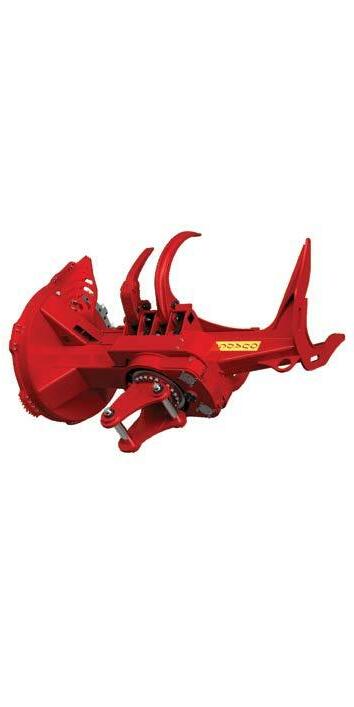
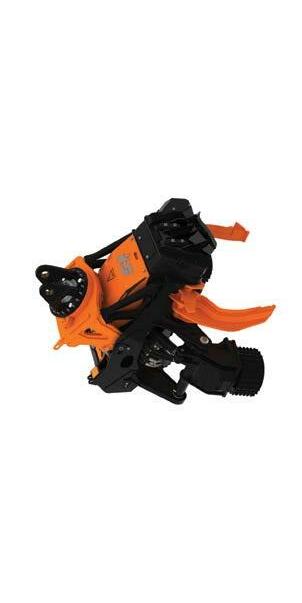
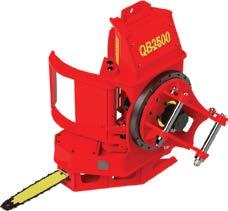


FENNELL Forestry says it is taking the crucial first step to wards decarbonising Aus tralia’s heavy vehicle trans port industry.
The Mount Gambier-based harvest and haulage com pany has commissioned the world’s second-ever electric log truck, in the hope of providing a realistic carbonzero solution for the indus try.
Transport is Australia’s
produces in excess of 500 tonnes of carbon every year.
Converting to an electric engine and battery system
environmental dividends will be even greater.
Fennell Forestry Manag ing Director Wendy Fennell said the truck – the first of its kind in the country – was the cornerstone of a re search and findings trial in the lead-up to Federal Gov ernment’s 2030 emissions reduction targets.
“We’re taking the pivotal first steps in trialling this carbon reducing technology
“Decarbonising our indus try won’t happen overnight. We need to start trialling this technology now so we have time to consider the best options for each appli cation.
“From here, we can prop erly asses what is a realistic solution and provide some answers to help the industry meet emission targets.”
Ms Fennell said work was currently underway to con vert the once diesel-pow ered prime mover to a fully electric battery operating system, using Australian technology, innovation and workmanship.
It expected to be opera tional in October 2022.
“The truck is currently with Janus Electric, an Aus tralian company that un derstands our heavy vehicle transport requirements and gross combination mass (GCM) that is higher than our American and European counterparts,” she said.


Janus Electric General Manager Lex Forsyth said the team developed a modu lar conversion system that allows it to convert most major engines, trucks and OEM products.
“There are currently about 105,000 registered Class 8 trucks in Australia,” he said.

“Our solution is a perfect fit for about 80% of the mar ket here in Australia.”
Mr. Forsyth said the sig nificant capital investment required to purchase a new truck versus converting an existing vehicle was a key factor in the design of the
we only produce 5,000 new trucks a year for our mar ket,” he said.
“If we were to try to change the way we consume energy and go for a greener trans portation and logistics mis sion, it would take 20 years if we started producing new trucks today.
“The important thing for fleet operators is that after five years, the trucks are due to be rebuilt anyway.
Instead of rebuilding the diesel engine, [they can put] in a new electric motor and away from diesel and main tenance costs of running a diesel vehicle.
Unlike electric vehicles that plug into a charging sta tion, Janus’ electrical system replaces a truck’s batteries like a racing car that replac es its tyres while it’s idling.
“We have created inter changeable battery technol ogy to mitigate the prob lem of vehicles parking for freight and the loss of ad vantage for fleet operators,” Forsyth said.
“There are two batteries on the truck … they go to where the fuel tanks were on the car, and they are re placed.
“We are currently doing this with a 3-ton forklift and swapping the two batteries takes about four minutes.”
But going forward, Forsyth envisions a more automated approach.
“As we get to a larger scale, the trucks will pass through an automated charging changing station where you will simply drive the truck
EIGHT fully funded scholarships for women in forestry to participate in the latest offering from Tasmanian Leaders have been provided by the Tasmanian Forests and Forest Products Net work with the support of the Tasmanian Government.
The I-LEAD Women in In dustry Program has been created to exclusively sup port and accelerate the lead ership journey of rising and established women lead ers in Tasmania. Through the program a cohort of 37 women from across tradi tionally male-dominated sectors including mining, fisheries, manufacturing, electricity and water will have an opportunity to con nect and advance gender equality together.
Scholarship recipient, Tammy Price, said the pro gram would allow her to gain confidence and cement leadership skills that she has acquired over the years.
“I think when people meet me, they find I am quite friendly and talk a lot, but in reality behind the smile there is always a lot of selfdoubt, and that is some thing that I really would like to overcome,” Ms Price said.
“I always have a lot of balls in the air, juggling work and family and it takes a lot of
co-ordination, discipline and energy.”
Ms Price, who began working in the forest indus try assisting with admin istration for her family’s business when she was 14, said that pursuing a career in the sector was a natural progression, and one that she’s never regretted.
“I worked with Timber Communities Australia (Tasmania) for a few years, before commencing em ployment in the public af fairs department at North Forest Products. I then moved into business de velopment and sales – and moved across to Gunns Limited working in com munity relations before moving into operations as a plantation forester oversee ing 20,000ha of plantation establishment in the south and managing the financial processing for the team.
“I left industry for a short period and returned as the finance manager for SFM Environmental Solutions around 10 years ago.”
Despite a long history working in the Tasmanian forest industry, Ms Price has been reluctant to put herself forward for scholar ship opportunities.
“I’ve always just worked behind the scenes, encour aging everyone else to apply
however, when the I-LEAD program was advertised I took a real interest in it,” Ms Price said.
I-LEAD participants will have the benefit of expert facilitators and prominent sector professionals shar ing invaluable learnings for their career success across the key areas of personal, strategic and business lead ership. The women will be given the opportunity to build networks within the forest industry and within the broader workforce through the relationships that will be formed during the program.
TFFPN Convenor, Therese Taylor, said the eight wom
en, through their participa tion in I-LEAD, are demon strating their commitment to providing leadership within our forest industry.
“Building and supporting this leadership capability is key to the development and implementation of initiatives under both the Network’s Forest Industry Workforce Development Plan and the Diversity Ac tion Plan,” Ms Taylor said.
“The diversity in the for est industry’s business size, type and capacity to implement workforce de velopment and diversity initiatives promotes lead ership from within the sector to drive the organi
sational change that is crit ical for success.”
“The Network is thrilled to be able to support eight highly-motivated women working in our sector to advance their leadership skills,” she said.
Ms Price, who is a fourthgeneration forest industry worker and whose daugh ter now works in the sec tor, believes ‘forestry is family’.
“There is no industry quite like forestry. The peo ple are warm and friendly and always willing to help. I’d encourage women to se riously consider working in this area,” she said.
The women who received full scholarships were Bronnie Grieve and Tam my Price from SFM Envi ronmental Solutions; Gem ma Poke from Tasmanian Wood Co, Janet Li from Timberlands Pacific, Kath ryn Cresswell from Forico, Kristen Dransfield and Lin da Crawford from Sustain able Timber Tasmania and Melanie Conomikes from Hobart City Council.
For more information on workforce development and diversity initiatives go to www.tffpn.com.au or contract Tracey Taylor by email Tracey.Taylor@ tffpn.com.au or phone 0499 623 791.

DOWNER and Hyne Timber have come to gether to collaborate on a Fraser Coast Skills Pro gram (FCSP) to help develop training needs that enable and enhance manufactur ing opportunities and ca pabilities across the Fraser Coast.
The partners were repre sented at the Fraser Coast Careers Expo to officially launch the program to the 2000 strong crowd who were wanting to gain hands-on experiences and access to industry experts.
The Expo provided stu dents and jobseekers with real-world insights into what certain roles and sectors are really like to work in.
Hyne Timber’s Stakehold er Engagement Manager, James Hyne said the expo presented a great opportu nity to launch this new col laboration.
“Hyne Timber and Down er are two of the largest pri vate employers across the region, collectively deliver ing around 300 years’ expe rience in manufacturing.
“We understand the im portance of a skilled work force in the Fraser Coast.

Our Fraser Coast Skills Pro gram (FCSP) is an impor tant collaboration, particu larly targeting those who already love and call this region home. With the right partnerships and programs, some of the most rewarding careers are right here.
The partners have come together with input from government and higher edu cation providers, with the goal of implementing pro grams to develop thought leadership, intellectual capability and the skilled workforce necessary to es tablish a sustainable FCSP. The FCSP will also work with other employers, as well as education provides in the re gion to ensure success.
Downer’s Queensland Operations General Man ager, Tony Prove said key investment projects from the State Government such
as the Queensland Train Manufacturing Program will create more than 800 jobs to build 65 new trains in the area.
CENTRAL Victorian sawmill, Talbot Tim bers, crowns 170 years of endeavour by changing its direction, as it prepares for a future when logging is phased out in 2030. To keep the ball rolling, they have employed a market ing company, Wood4good, producing a transitioning plan which speaks to the confronting issues beset by logging and sawmill compa nies.
The report is funded by the Victorian Government Forestry Business (VFBT), to assist transition to the new reality only seven years away, when logging native forests will cease. Talbot Timbers is a veteran of 35 years in vertically integrat ed sawmilling, and is seek ing to invest in long-term planted timbers, using its knowledge of species and forest types, created within those plantations.
Alistair Hull and wife Roslyn provide the steward ship for Talbot Timbers, and
a cause for optimism, given the dire predictions for the industry’s future. The VFBT report, crafted by Sebastian Klein of Wood4good, sets out to identify which plan tations could be commer cialised and what resources could be utilised during the transition.
“At Wood4good we work collaboratively to create en terprises that help and pro tect and restore ecosystems and we provide alternative supply of quality forest products,” said Sebastian, fellow of Australian Rural Leadership Program, who holds a Masters in Enter prise and eco-ag systems.
Talbot Timbers believes it is well-placed to make this transition: Alistair is a positive thinker and so were his forebears who invested for the long term, starting out with firewood and fencing product. The Hulls are well known in Central Victoria with the town of Maryborough nearby, offering a ready resource of employees.
Today, they harvest, mill, kiln-dry and mould their own timber, producing high-value timber product.
Their sawn timber prod ucts include flooring, deck ing, cladding and furniture products, and they use grey box and sugar gum timbers which add strength, dura bility and hardiness to their range. They market directly to the public and wholesale to small and large retailers throughout Victoria.
“Alistair recognises a unique position and sees this transition as an oppor tunity for the State Govern ment to act for the survival of the industry. There is a lot of hope for the business if they strike it right.
“We’ve discovered 2,000 hectares of private lands, but nearby Majorca forest is a secure resource, under the Government’s current definition; and sugar gum in the area performs better
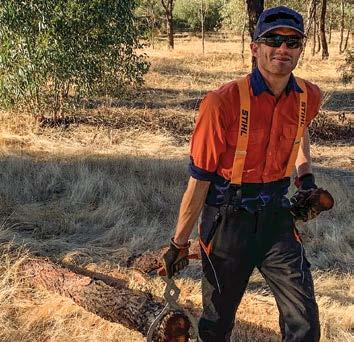
up to 700mm of water. But clarity at this time would be helpful,” said Sebastian.
All commercial harvesting activity on public land, in cluding the Majorca Planta tion, is managed by VicFor ests - a state-owned business responsible for the harvest, commercial sale and regrowing of timber from Vic toria’s state forests on behalf of the Government. Talbot Timber’s future relies on this resource for most of its needs, although logs could be acquired further afield in Moliagul and Mt Cole State Forests but are not preferred sources, and closures of these forests are imminent.
Majorca depends on a commitment to reactivat ing a practical, systematic silvicultural strategy that includes the thinning, uti lisation and culling or sup pression of small diameter trees to promote the release and growth of selected trees for future timber produc tion. Silviculture is the art and science of managing forests, so biologically, it is a focus on what will be left behind rather than what is harvested.
“The state government has said they will release another tranche of funds from the Victorian Timber Innovation Fund, as they have done with ASH mill in Heyfield, Gippsland. The funding is imminent, but regardless of upgrades to

“There’s a lot of strong in terest by farming and land care groups such as central Victorian regional bodies, councils, and the city of greater Bendigo which is putting more trees in the ground - quite remarkable. Stakeholder round table and other alliances want to see investment in the area.”
Wood4good has complet
ed six more reports since 2021, while the Hulls re main positive, after meet ings with political parties; and awaiting the next for est-defining statement by the government.
“These are uncertain and trying times for many, so this is an opportunity for the state government, to demonstrate their commit ment to the industry,” said Sebastian.

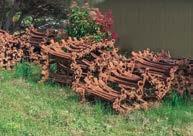
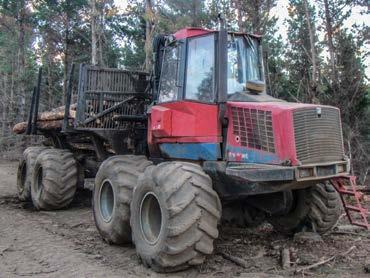

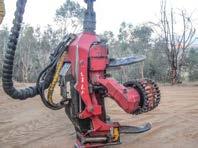















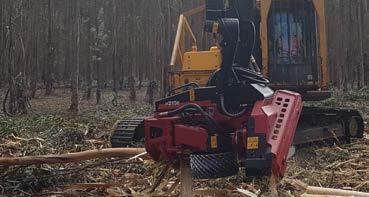












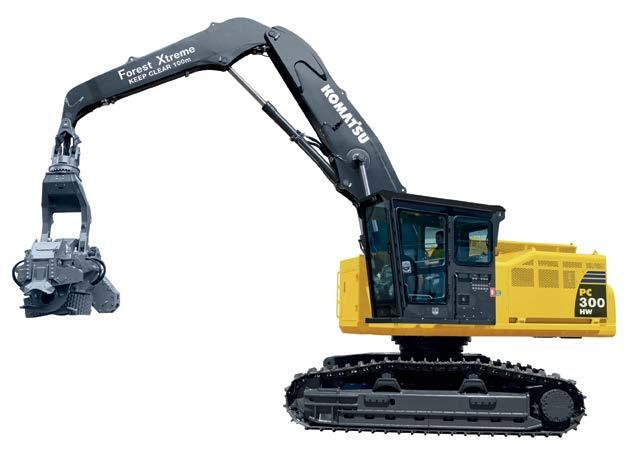
+61
9647